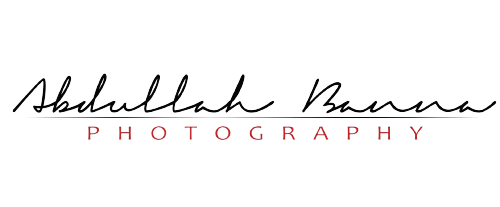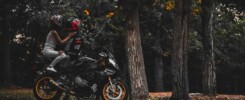Hey there, photography fanatics! Welcome aboard this crash course designed to propel your skills to new heights. Whether you’re a complete beginner or a seasoned shooter looking to brush up, this guide is your one-stop shop for capturing stunning images. Let’s ditch the ordinary and embark on a journey to create extraordinary photos!
- Understanding the basic components of a camera
- Essential camera settings for stunning shots
- Composition techniques for capturing captivating images
- Lighting tips and tricks for enhancing your photographs
- Mastering different photography genres – landscape, portrait, wildlife, etc.
- Editing software and tools for post-processing your images
- Tips for building a photography portfolio
- Resources for furthering your photography skills

Understanding the basic components of a camera:
A camera’s key parts are the lens and sensor. The lens captures light and focuses it, while the sensor converts light into a digital image. 
Lenses:
- Focal length: determines the field of view (wide or narrow) and magnification.
- Aperture: controls light amount and depth of field (blurred background).
Sensors:
- Size: bigger sensors capture more light for better image quality and low-light performance.
- Megapixels: more megapixels capture more detail for larger prints and cropping.
- ISO: higher ISO captures light in low light but introduces noise (grain).
Essential camera settings for stunning shots
Taking Great Photos: Mastering Aperture, Shutter Speed, and ISO
- Aperture: Controls the amount of light and depth of field. Wider aperture (low f-number) lets in more light, blurring the background (great for portraits). Narrow aperture (high f-number) lets in less light but keeps everything sharp (great for landscapes).
- Shutter Speed: Controls how long light hits the sensor. Faster shutter speed freezes motion (great for action shots). Slower shutter speed blurs motion (great for waterfalls).
- ISO: Controls the sensor’s sensitivity to light. Lower ISO is better for bright light and clean images. Higher ISO is better for low light but can introduce grain (noise).
Composition techniques for capturing captivating images.

Mastering Composition for Captivating Photography
- Rule of Thirds: Divide your frame into a 3×3 grid. Place your subject off-centre, along the lines or at their intersections, for a more balanced look.
- Leading Lines: Use lines in your scene, like roads or rivers, to draw the viewer’s eye towards your subject.
- Symmetry: Create pleasing photos by balancing elements on either side of the frame. Look for reflections, buildings, or flowers with even features.
- Patterns: Repetitive shapes, lines, or colors add interest. Use framing elements to highlight patterns, like arches around a bridge.
- Framing: Draw attention to your subject by using natural or man-made elements like doorways or branches to create a frame around it.
Lighting tips and tricks for enhancing your photographs.
Natural Light Photography
- Golden hour (sunrise/sunset): Warm, soft light, ideal for portraits and landscapes.
- Blue hour (dusk/dawn): Diffused blue light for a mystical feel.
- Light direction:
- Front light: Clear, vibrant photos (reduces shadows).
- Side light: Adds depth and drama (creates shadows).
- Backlight: Striking silhouettes and glowing rims.
Diffusers: Soften harsh sunlight (useful for midday).
Reflectors: Bounce light to fill shadows (creates balanced light).
- Soft light vs. Hard light:
- Soft light: Flattering, versatile (gentle shadow transitions).
- Hard light: Dramatic effect (emphasizes details with sharp shadows).
Artificial Light Photography
- Types of lights:
- Continuous light: Steady light source (good for beginners).
- Flash: Freezes action or adds drama (burst of light).
- Strobes: Powerful light for large areas/subjects (professional setups).
- Home studio setup:
- Softboxes: Diffuse light for a softer look.
- Umbrellas: Diffuse or reflect light (versatile).
- Light stands: Position lights at different angles/heights.
- Advanced techniques:
- Three-point lighting: Key light, fill light, backlight.
- Gels/filters: Modify color temperature and mood.
Balancing Light:
- Combine artificial light with ambient light for a natural look.
- Use diffusers to avoid harsh shadows and overexposure.
- Light meters and histograms help achieve precise exposure.
Mastering different photography genres – landscape, portrait, wildlife, etc.
- Landscape: Wide-angle lenses, small apertures (f/11-f/16), and tripod.
- Portrait: Wide apertures (f/2.8-f/4), prime lenses, and focus on eyes.
- Wildlife: Telephoto lenses, fast shutter speeds (1/500s or faster), and patience.
- Macro: Close-up filters, small apertures (f/11-f/16), and stable platform.
- Street: Wide or normal lenses, quick reflexes, and blending into the scene.
Editing software and tools for post-processing your images
- Adobe Lightroom: Organize, edit, and share photos.
- Adobe Photoshop: Advanced editing and compositing.
- Capture One: RAW image editing and tethered shooting.
- GIMP: Free, open-source image editor.
- Skylum Luminar: AI-powered editing tools.
- Mobile apps: Snapseed, VSCO, and Adobe Lightroom Mobile.
Tips for building a photography portfolio
Creating a Photography Portfolio that Gets You Noticed
- Select your best work: Showcase variety and depth.
- Organize into themes: Group similar images for coherence.
- Showcase your style: Let your unique perspective shine through.
- Include contact information: Make it easy for clients to reach you.
- Update regularly: Refresh with new projects and skills.
Resources for furthering your photography skills
Photography Resources for Continued Learning
- Online courses: Udemy, Coursera, and Nikon School.
- Books: “Understanding Exposure” by Bryan Peterson and “The Photographer’s Eye” by Michael Freeman.
- Workshops and seminars: Local photography clubs and national conferences.
- Community forums: Reddit’s /r/photography and DPReview forums.
- Photography podcasts: “The Candid Frame” and “The Art of Photography.”
With these tools and techniques, you’re ready to embark on an exciting journey into the world of photography. Capture the beauty around you, experiment with new ideas, and most importantly, enjoy the process!




